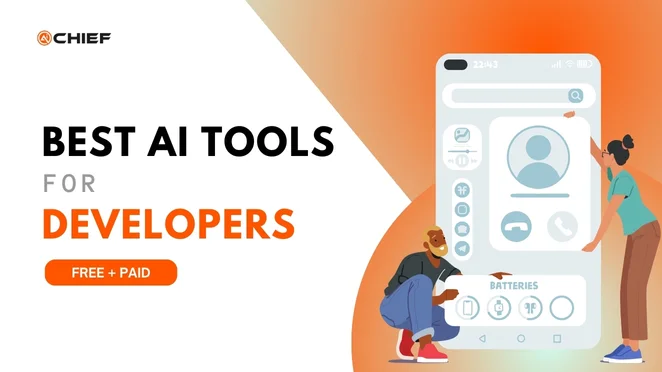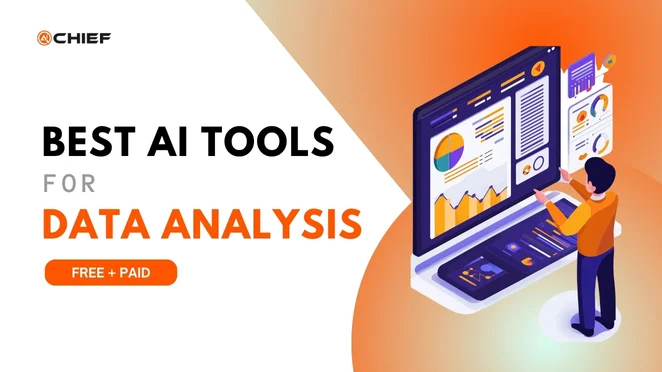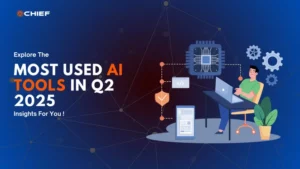Artificial Intelligence (AI) has become an integral part of various fields, and mathematics is no exception. The integration of AI into mathematics has opened new avenues for research, problem-solving, and education.
Whether it is about finding easy and comprehensive solutions to complex math problems or critical analysis of word problems, AI tools have taken everything by storm. AI-powered tools provide a seamless way to make things automated and more precise and save your time and effort.
This article explores the role of AI in mathematical applications, its evolution, and the significance of AI tools in this domain.
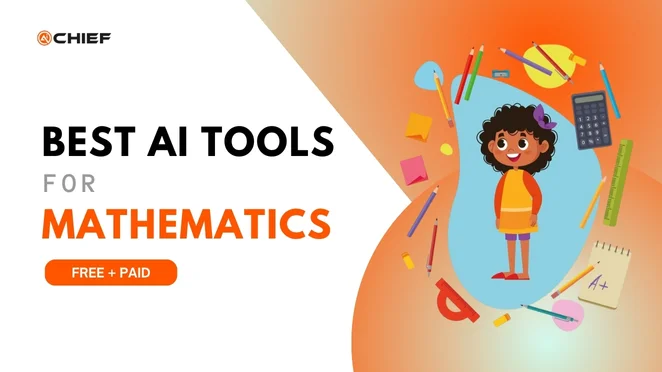
Let’s explore every aspect of this topic with a gradual approach and make everything understandable.
Table of Contents
Overview of Artificial Intelligence in Mathematical Applications
When we talk about the impact of artificial intelligence in mathematical applications, a significant impact comes to our plate. Using Machine Learning models, Natural Language Processing, and Neural Networks, these tools make things automated.
Here are some key areas where AI’s application in mathematics encompasses:
| Fields | Assistance of AI |
|---|---|
| Automated Theorem Proving | AI systems can assist in proving mathematical theorems by exploring vast possibilities more efficiently than humans. For example, Google’s DeepMind developed AlphaProof, an AI capable of solving complex mathematical proofs, including challenging problems from the International Mathematical Olympiad. |
| Symbolic Mathematics | AI tools can perform symbolic computations, such as integration and differentiation, aiding in solving complex equations. |
| Pattern Recognition | AI algorithms can identify patterns in large datasets, facilitating discoveries in number theory and other mathematical fields. |
| Mathematical Modeling | AI assists in creating models that simulate real-world phenomena, enhancing predictions and analyses. |
The Evolution and Significance of AI Tools in Mathematics
Significant milestones have marked the journey of AI in mathematics. In the early stage of AI, it was limited and offered a few functions to work on.
But as 2025 has approached, things have changed. Significant advancements are changing the ways of solving any kind of mathematical problem for both students and researchers.
Here is the evolution to advancement overview of AI in Mathematics.
| Early Developments | Initial AI applications focused on automated reasoning and symbolic computations, laying the groundwork for more advanced tools. |
| Integration with Machine Learning | The incorporation of machine learning techniques enabled AI systems to learn from data, improving their problem-solving capabilities. |
Advanced AI Systems | Recent developments, such as AlphaProof and AlphaGeometry, demonstrate AI’s potential in tackling high-level mathematical problems. AlphaProof, for example, solved 25 out of 30 problems from the 2024 International Math Olympiad, showcasing AI’s growing proficiency in mathematical reasoning. |
The Role of AI in Enhancing Mathematical Problem-Solving
Artificial Intelligence (AI) is revolutionizing the way we approach mathematical problem-solving. From simplifying calculations to finding solutions for highly complex problems, AI tools have become an essential companion for researchers, educators, and students alike.
In the following section, we have mentioned some of the most remarkable aspects that will increase your understanding exponentially. Let’s explore how AI is transforming the field of mathematics step by step.
AI Algorithms and Their Applications in Solving Complex Mathematical Problems
At the heart of AI’s ability to solve mathematical problems are advanced algorithms. These algorithms are designed to process vast amounts of data, recognize patterns, and provide accurate solutions in a fraction of the time it would take a human.
Here are some key applications of AI in solving mathematical problems:
- Solving Equations Automatically
AI tools like Mathway and Symbolab use sophisticated algorithms to tackle equations ranging from simple algebra to advanced calculus. They provide step-by-step solutions, making them perfect for students and educators.
- Analyzing Big Data with AI Models
For researchers, AI tools such as Wolfram Alpha or MATLAB AI modules help analyze and visualize complex data sets. These tools are invaluable in areas like physics, engineering, and economics, where advanced mathematical computations are required.
- Optimization Problems
AI is frequently used to solve optimization problems in industries like logistics and finance. For example, AI models can determine the best route for deliveries or optimize investment portfolios by solving linear and non-linear equations.
- Pattern Recognition in Mathematics
Machine learning models, a subset of AI, are exceptional at recognizing patterns. Tools like GeoGebra AI help students and professionals understand mathematical concepts such as symmetry, geometry, and fractals.
- Real-Time Problem Solving
Apps like Photomath and Microsoft Math Solver allow users to scan problems and get instant solutions. These tools use AI-powered computer vision to interpret handwritten or typed equations and solve them in seconds.
That’s all about how AI works behind these tools and provides an exclusive way to solve mathematical problems with precision. Now, in the following section, we will explore the best AI tools for mathematics so that you can et
Top 10 AI Mathematics Tools You Must Know About!
As we know, AI tools have made solving mathematical problems like never before. In this section, we explore these AI tools. We have done critical research on these AI tools, their features, ratings, and use cases. So, let’s explore them.
1. Julius AI
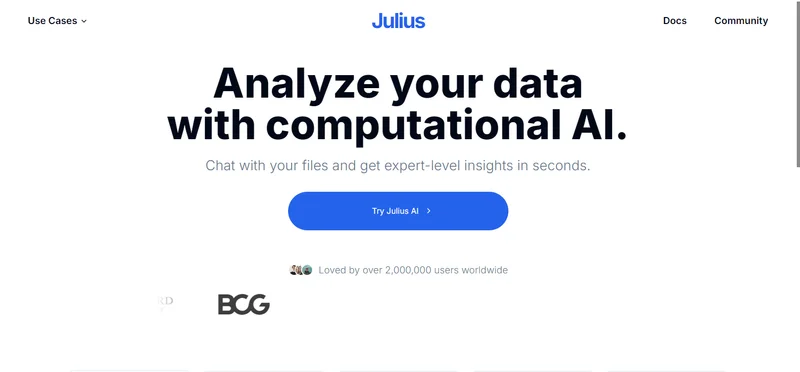
In our list, the first AI tool is Julius AI– a revolutionary tool designed to simplify mathematics through advanced AI technology. It caters to students, educators, and researchers by providing quick and accurate solutions to a wide range of mathematical problems, from basic arithmetic to advanced calculus.
In addition, the Julius AI platform is packed with features that offer step-by-step guidance, graphical visualizations, and real-time problem-solving. Its user-friendly interface ensures anyone can navigate it easily, while its multi-language support and integration capabilities make it versatile for global users.
With tools for equation solving, geometry assistance, and even collaborative document integration, Julius AI is a must-have for making mathematics engaging, accessible, and efficient.
Features
- User-friendly Interface
- Graphical Representation of Problems
- Step-by-Step Problem Explanations
- Equation Solving and Simplification
- Real-Time Problem Solving
- Multi-Language Support
- Advanced Algebra Solver
- Google Docs Integration
Ratings on G2:
- 4.5/5 ⭐
Best For:
Students, teachers, and researchers who are looking for a comprehensive AI math assistant.
2. MathGPTPro
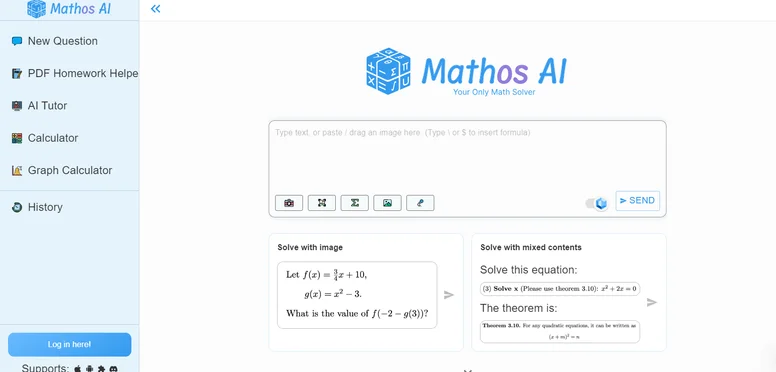
The second AI tool for mathematics is MathGPTPro. It is an AI-powered tool designed to provide you with fast and accurate solutions to mathematical problems ranging from basic math to complex calculus.
By utilizing the power of GPT models, MathGPTPro delivers step-by-step explanations and visual representations, making it an excellent choice for learners and professionals alike.
Whether you’re solving algebraic equations, plotting graphs, or tackling geometry problems, MathGPTPro offers you a seamless experience that adapts to your various mathematical needs.
Its AI capabilities also allow you to do real-time problem-solving and analysis, ensuring you can get instant feedback.
Features
- AI-Powered Problem Solving for Mathematics
- Supports Algebra, Calculus, Geometry, and Trigonometry
- Provides Step-by-Step Explanations
- Offers Graphing and Visualization Tools
- Multiple Input Methods (Text, Image, or Graph)
- Instant Solutions for Complex Problems
- Customizable Preferences for Learning
- Integration with Educational Platforms
Ratings on G2:
4.6/5 ⭐
Best For:
Students, educators, and professionals who are looking for an intuitive and efficient AI tool to solve math problems quickly and accurately.
3. Mathway

Mathway is another versatile AI tool designed to assist you with a wide variety of math problems, from basic arithmetic to advanced calculus and algebra. It is known for its simplicity and efficiency, offering instant solutions to any equation entered.
In addition, Mathway’s real-time problem-solving feature is particularly useful for students who need to quickly understand the steps involved in a solution. The tool also provides visual aids like graphs to better illustrate complex concepts, making learning math more interactive and accessible.
Features
- Instant Step-by-Step Solutions
- Supports a Wide Range of Mathematical Topics (Algebra, Geometry, Trigonometry, Calculus, etc.)
- Graphing Capabilities for Visualizing Problems
- Mobile and Web Application for Accessibility
- History of Previously Solved Problems
- Equation Solver for Advanced Mathematics
- Math Problem Scanning via Camera
- Real-Time Feedback and Help
Ratings on G2:
4.7/5 ⭐
Best For:
Students and learners who need quick, reliable, and easy-to-understand solutions for a variety of math problems.
4. Wolfram Alpha

For those who are looking for the most advanced AI tools for mathematics, Wolfram Alpha has them covered! It offers powerful computational knowledge across a wide range of fields. Wolfram Alpha’s sophisticated algorithms can solve complex problems in algebra, calculus, statistics, and more.
Wolfram Alpha’s strength lies in its ability to provide detailed solutions, graphs, and explanations, making it invaluable for both students and professionals.
Additionally, the platform supports interactive elements like plot generation and real-time data analysis, enabling users to visualize and better understand their solutions.
Features
- Knowledge-Based Computational Engine
- Instant Step-by-Step Solutions for Math and Science Problems
- Wide Range of Topics (Algebra, Calculus, Statistics, etc.)
- Data Interpretation and Graphing Tools
- Natural Language Processing for Problem Input
- Access to Extensive Data Sets and Information
- Customizable Problem Input Options
- Provides Theoretical Explanations for Mathematical Concepts
Ratings on G2:
- 4.8/5 ⭐
Best For:
Mathematicians, engineers, and professionals who need an advanced AI tool for tackling complex math and data analysis problems.
5. Photomath
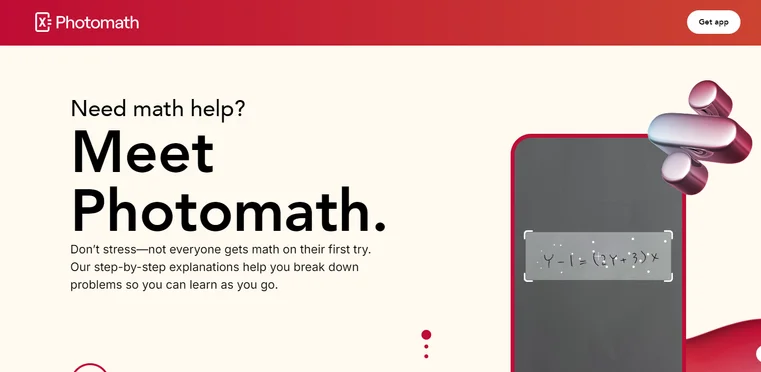
Photomath is also an AI-powered app designed to help you solve math problems by simply taking pictures of them. It is widely used for its ease of use and instant problem-solving abilities.
The Photomath AI also provides detailed, step-by-step solutions along with visual explanations to ensure you can understand each concept clearly. Whether you’re dealing with arithmetic, algebra, or calculus, Photomath breaks down complex problems into manageable steps.
Moreover, its real-time scanning and problem-recognition features make it an ideal tool for students to learn at their own pace.
Features
- Camera-Based Problem Scanning
- Step-by-Step Problem Solutions
- Real-Time Graphing of Functions
- Multi-Language Support for Global Use
- Visual Explanations and Interactive Learning
- Equation Solver for Basic to Advanced Math
- Word Problem Solver with Contextual Understanding
- Instant Solutions for Homework Assistance
Ratings on G2:
- 4.5/5 ⭐
Best For:
Students who want a quick and efficient way to solve and understand math problems with real-time explanations.
6. Maple AI
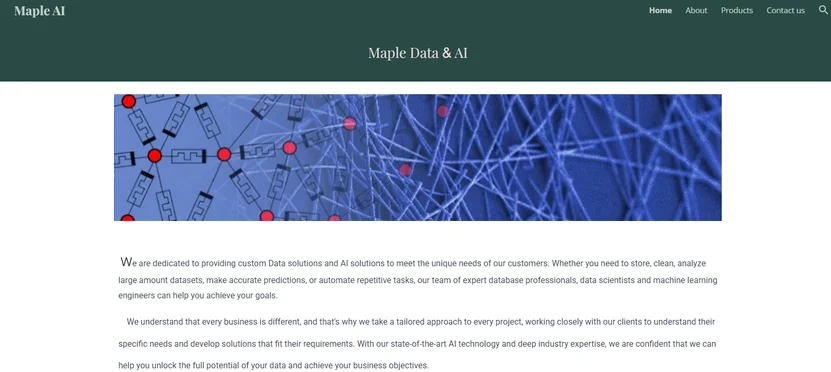
Maple AI is one of the most advanced AI tools for mathematics that is designed for advanced mathematical problem solving, featuring sophisticated AI algorithms for a wide range of math fields.
It provides you with symbolic computation, calculus, linear algebra, and more, offering not only solutions but also in-depth explanations of mathematical concepts. Maple AI’s powerful computation engine allows users to solve equations, visualize functions, and perform complex data analysis.
Its intuitive interface makes it accessible for students while still offering the depth required by researchers and professionals.
Features
- Symbolic and Numerical Problem Solving
- Advanced Graphing and 3D Visualization Tools
- Integration with AI and Machine Learning Models
- Comprehensive Tools for Algebra, Calculus, and Differential Equations
- Step-by-Step Solutions with Detailed Explanations
- High-Level Computation for Engineering and Research
- Interactive Learning and Problem-Solving Environment
- Data Analysis and Visualization Features
Ratings on G2:
- 4.6/5 ⭐
Best For:
Researchers, professionals, and students who need a comprehensive, advanced AI tool for solving complex mathematical and computational problems.
7. GeoGebra AI
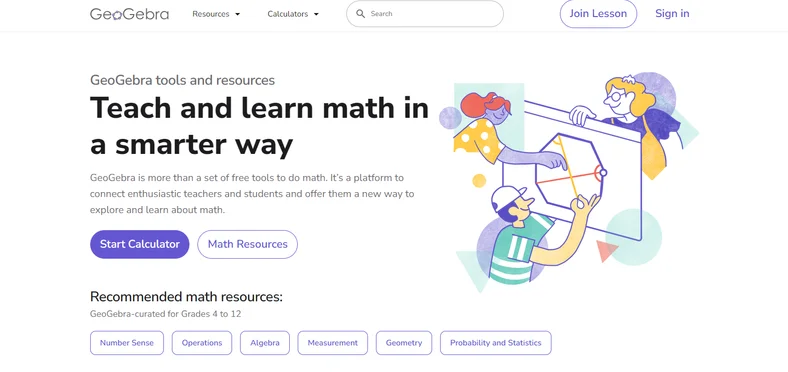
In the list of our AI tools, GeoGebra AI comes as a versatile and dynamic math tool that brings mathematics to life through interactive learning. It integrates AI with graphing, geometry, algebra, and calculus to provide real-time solutions and visualizations.
Furthermore, GeoGebra’s AI-driven features help students and educators understand mathematical concepts through visual representations, interactive graphs, and hands-on problem-solving. It is perfect for teaching and learning, as it allows for the exploration of math concepts in a fun and engaging way.
Features
- Interactive Graphing and Geometry Tools
- Real-Time Solutions and Step-by-Step Guidance
- Multi-Field Support (Algebra, Geometry, Calculus, etc.)
- Customizable Learning and Exploration Environment
- Problem-Solving with Visual Representations
- Collaborative Learning Tools for Group Work
- 2D and 3D Graphing and Animation Capabilities
- Online Community for Sharing Resources and Ideas
Ratings on G2:
- 4.7/5 ⭐
Best For:
Students, educators, and math enthusiasts who want an interactive and engaging tool for learning and teaching mathematics.
8. MATLAB
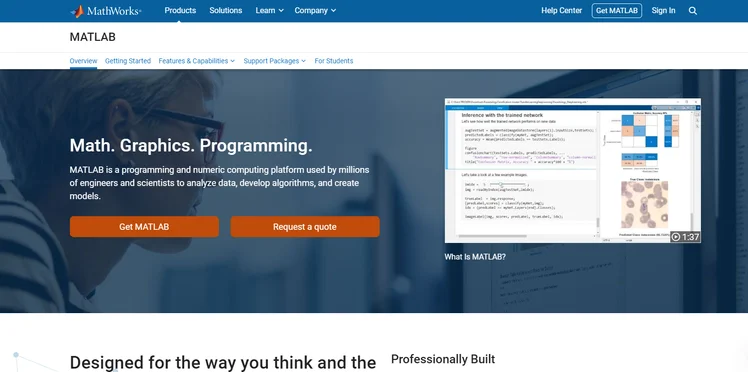
MATLAB is a renowned AI tool for mathematics that consist on advanced AI tools that are widely used in mathematics, engineering, and scientific research. It combines numerical computation, data analysis, and algorithm development to provide powerful solutions for complex mathematical problems.
Moreover, with its strong computational engine and built-in functions, MATLAB helps you solve problems in linear algebra, calculus, optimization, and more. It also offers advanced data visualization tools, making it easier for users to analyze and interpret data.
MATLAB is ideal for professionals and researchers who need to solve complex mathematical problems with precision.
Features
- High-Level Programming Language for Mathematical Computations
- Specialized Toolboxes for Linear Algebra, Signal Processing, and Control Systems
- Extensive Graphing and Data Visualization Tools
- Customizable Functions for Problem Solving
- Symbolic Math Toolbox for Algebraic Expressions
- Integration with Machine Learning and AI Tools
- Interactive MATLAB Live Scripts for Analysis and Documentation
- Support for Parallel Computing
Ratings on G2:
- 4.7/5 ⭐
Best For:
Researchers, engineers, and professionals need a comprehensive tool for solving advanced mathematical and computational problems.
9. Socratic by Google

The second-last in the list of AI tools for mathematics, Socratic by Google, comes with great potential. It helps students understand and solve math problems using their smartphones. By scanning problems through the camera, Socratic provides you with step-by-step explanations, visual aids, and detailed solutions for various math topics.
Additionally, it uses AI to break down complex equations and concepts, making them easier for students to grasp. Socratic’s simple and user-friendly interface makes it a great companion for high school and college students looking for instant help with their homework.
Features
- Camera-Based Problem Scanning
- Step-by-Step Solution Explanations
- Visual Aids and Graphing
- Multi-Subject Support (Math, Science, etc.)
- AI-Powered Problem Breakdown
- Access to Online Learning Resources
- Instant Help with Homework
- Real-Time Solutions
Ratings on G2:
- 4.5/5 ⭐
Best For:
High school and college students who are looking for an AI tool that helps them understand math problems through visual aids and step-by-step explanations.
10. Microsoft Math Solver
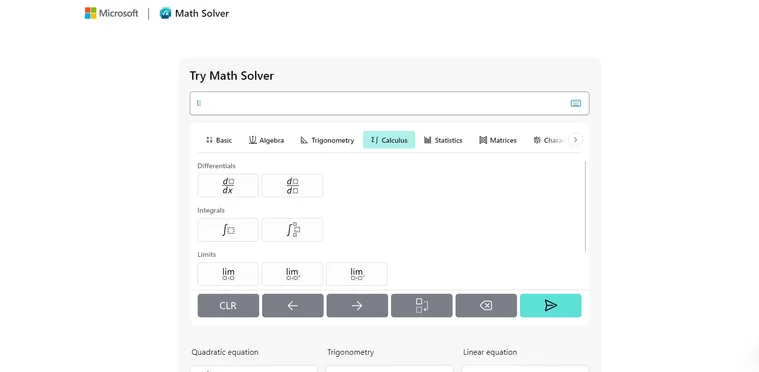
Last but not least, Microsoft Math Solver is a comprehensive AI tool that helps users solve a wide variety of math problems, from basic arithmetic to advanced calculus. This tool allows users to input problems through text or by scanning them with their device’s camera.
Microsoft Math Solver provides instant, step-by-step solutions and also explains the underlying concepts to help students understand math better. With graphing capabilities and multi-language support, it is an excellent tool for learners at all levels.
Features
- Camera and Text-Based Problem Input
- Step-by-Step Solutions
- Graphing Capabilities
- Multi-Language Support
- Math Problem Breakdown
- Real-Time Help with Problems
- Access to Video Tutorials
- Problem Categorization (Algebra, Trigonometry, Calculus, etc.)
Ratings on G2:
4.6/5 ⭐
Best For:
Those students and learners need an intuitive and interactive tool to solve and understand math problems across different levels and topics.
The above AI tools provide you with excellent assistance in solving mathematical problems, not only for professionals but also for students. While they offer exclusive AI solutions for your math problems, you should know about some considerations that we will cover later. But for now, let’s discuss some use cases of AI-powered mathematical solutions.
Case Studies Showcasing AI-Driven Mathematical Solutions
AI isn’t just theoretical—it’s already being applied to solve real-world mathematical challenges. Let’s look at some examples:
Optimizing Traffic Systems
AI-based mathematical models have been used in urban planning to optimize traffic flow. Algorithms analyze data from sensors and cameras to reduce congestion, predict traffic patterns, and improve public transportation systems.
Breakthrough in Pure Mathematics
AI tools like those developed by Google’s DeepMind have successfully proven mathematical theorems. For example, their AI was used to discover patterns in knot theory—a field of pure mathematics—leading to groundbreaking research.
AI in Weather Forecasting
Weather forecasting involves solving complex mathematical models with vast amounts of data. AI-driven tools like IBM’s Watson use these models to predict weather patterns more accurately, providing insights for agriculture and disaster management.
Financial Modeling
Banks and financial institutions use AI-driven mathematical tools to calculate risks and predict market trends. For instance, Maple AI and MATLAB assist analysts in solving intricate models related to stock market behavior.
Improving Accessibility in Education
Tools like Socratic by Google and Khan Academy AI Tutor empower students worldwide by breaking down complex mathematical concepts into understandable steps, making quality education more accessible.
Challenges and Ethical Considerations
When we come to talking about the challenges in Integrating AI tools into mathematics education, it offers numerous benefits but also presents several challenges and ethical considerations. We have listed these considerations and challenges in the following section so that you can be aware of them.
Over-Reliance on Technology
Excessive dependence on AI tools may reduce students’ critical thinking and problem-solving skills. It’s essential to balance technology use with traditional learning methods to maintain cognitive development.
Accessibility Issues
Not all educational institutions have the resources to implement advanced AI tools, leading to disparities in learning opportunities. Ensuring equitable access to technology is crucial for fair education.
Data Privacy Concerns
AI tools often collect extensive data on students’ performance and behavior, raising questions about data security and privacy. Protecting this information is vital to maintaining trust and complying with privacy regulations.
How To Overcome These Ethical Implications?
We have learned about the ethical concerns of AI in mathematics. How can you overcome these issues? The use of AI in mathematics responsibly can help you to overcome such hazards. Lets explore the other ethical practices in the following section.
1. Bias in AI Algorithms
AI systems can inherit biases present in their training data, potentially leading to unfair assessments or recommendations. Regular audits and diverse data sets are necessary to mitigate bias.
2. Transparency and Accountability
AI decision-making processes can be opaque, making it challenging to understand how conclusions are reached. That’s why developers should strive for transparency to build trust and allow for accountability.
3. Impact on Teaching Roles
While AI can automate certain tasks, it cannot replace the human elements of teaching, such as emotional support and fostering critical thinking. AI should complement, not replace, educators.
Addressing these challenges and ethical considerations is essential to ensure that AI tools enhance mathematics education responsibly and effectively.
Future Trends in AI and Mathematics
The future of AI in mathematical industry is seems to be very bright as there are various advancements have happened and still happening which projects that in the coming years, things will be more accessible than ever. Here are some projections for you to get its idea.
1. Personalized Learning
AI-powered adaptive learning platforms are set to revolutionize education by tailoring mathematical content to individual learning needs. These platforms analyze students’ performance data to adjust learning materials, ensuring that each student receives the appropriate level of challenge and support.
2. Enhanced Research Capabilities
AI tools are expected to assist researchers in exploring complex mathematical theories and models, potentially leading to new discoveries and advancements in the field. By automating routine calculations and simulations, AI allows researchers to focus on more creative and theoretical aspects of mathematics.
3. Integration Across Industries
The application of AI in mathematics is anticipated to expand across various industries, including healthcare, engineering, and environmental science. AI’s ability to process and analyze complex mathematical models will enhance problem-solving and innovation in these sectors.
Comprehensively, the future of AI in mathematics is promising, with advancements in algorithms, predictive analytics, and real-time problem-solving set to transform the field. The integration of AI is expected to enhance personalized learning, research capabilities, and industry applications, leading to more efficient and innovative mathematical solutions.
Conclusion
At the end of our discussion on AI Tools for Mathematics, there are plenty of them. In the above article, you can find a variety of AI tools, their features, ratings, and best use-case scenarios.
The AIChief believes that our audience should know about every aspect of a topic, which is why we added all the relevant topics and addressed all the related concerns. So, read the above discussion to streamline your math-solving processes and acknowledge the concerns about AI in the mathematical industry and its future in the field of Mathematics.
Frequently Asked Questions
How can AI Tools for Mathematics benefit my business?
Businesses can use AI-powered mathematical algorithms tailored for financial and operational modeling to gain improved data analysis, optimized decision-making, cost-efficient operations, and competitive insights.
What industries will be most impacted by AI Tools for Mathematics in 2025?
Industries such as finance, engineering, healthcare, and technology benefit significantly by using AI tools to drive innovation, optimize processes, and enhance predictive analytics.
How do AI Tools for Mathematics improve research and education?
They expedite complex calculations, offer interactive learning environments, and provide real-time problem-solving assistance, empowering educators and students to achieve greater accuracy and efficiency.
Do AI mathematics tools require extensive training for new users?
No, most modern solutions are built with user-friendly interfaces, comprehensive tutorials, and guided workflows.
What future developments can we expect in AI tools for mathematics?
Looking ahead, we can anticipate improvements such as higher accuracy, real-time analytics, enhanced predictive modeling, broader industry applications, and deeper integrations with emerging technologies like quantum computing, which will further transform both research and business operations.
